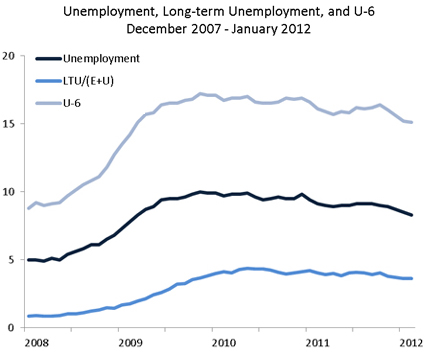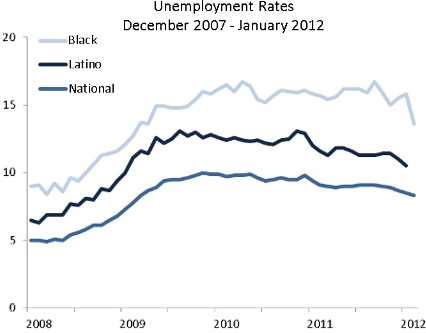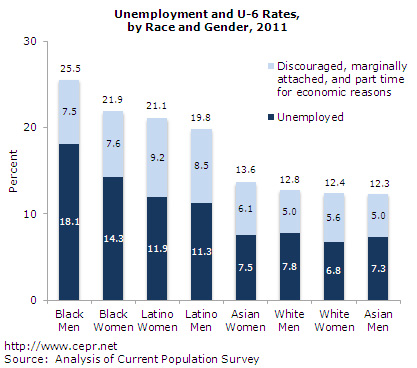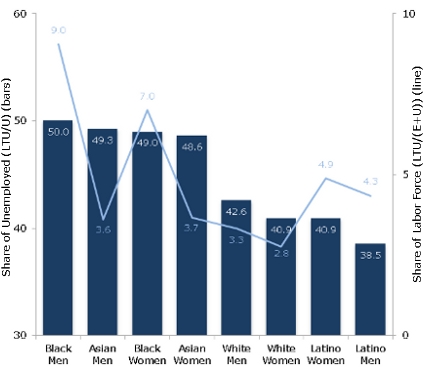March 08, 2012
Here at CEPR we like to fight for the underdog, so as economic blogs are all aflutter over the recent string of positive numbers, we’d like to remind you that for many, the struggle continues. Since our recovery began in 2009, the unemployment rate, and especially the U-6 rate, which adds in the discouraged, marginally attached, and part-time for economic reasons, has remained stubbornly high. The persistence of these measures, along with the proportion of the labor force that has been unemployed for at least six months (LTU/(E+U)), can be seen in the figure below.

John Schmitt and I use these expanded measures to describe something we call “long-term hardship.” Looking specifically at the unemployment rate for the overall population, blacks, and Latinos, we can see that some are being left even further behind than others.

In a paper released this week, John and I continue our discussion on long-term hardship (part one here) by describing the demographics of those still reeling from the recession. The figure below shows the standard unemployment rate and the broader U-6 measure for eight race or ethnicity and gender groups in 2011. For both African American men and women, more than one-in-five were unemployed or underemployed.

The next figure looks at two different measures of long-term unemployment (LTU): the standard measure, which gives the share of the unemployed who have been out of work for more than six months (LTU/U, where U refers to the unemployed, the dark blue bars); and the alternative measure, mentioned above, which gives the share of each group’s total labor force that has been out of work for six months or longer (LTU/(E+U), where E refers to the employed, the light blue line.

Half of all unemployed black men have been jobless for more than six months, followed closely by roughly 49 percent of unemployed Asian men, black women, and Asian women. However, the alternative measure shows that black men are much more likely than other workers to experience long-term unemployment. About 9 percent of all black men in the labor force, compared with 7 percent of black women, had been unemployed for six months or longer in 2011.
In addition to the headline numbers on unemployment rate and job growth, keep an eye tomorrow on what happens to long-term unemployment and the U-6 rate, both of which get at long-term hardship. (CEPR’s Dean Baker will be writing up his monthly Jobs Byte if you don’t want to wade through the report yourself.)






